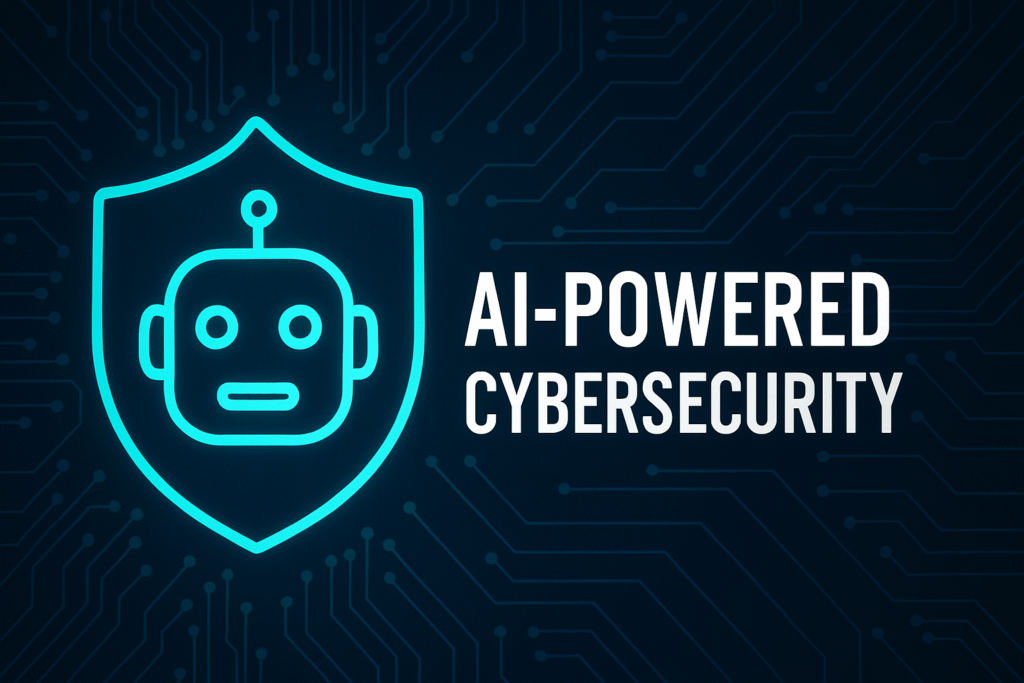How AI-Powered Cybersecurity Is Transforming Digital Protection in 2025

Introduction
In today’s digital-first world, cyber threats are growing more advanced and frequent. From data breaches to ransomware attacks, organizations face serious security challenges. To stay ahead of these threats, companies are turning to AI-powered cybersecurity—a cutting-edge approach that uses artificial intelligence to detect, prevent, and respond to cyberattacks more efficiently than ever before.
What Is AI-Powered Cybersecurity?
AI-powered cybersecurity refers to the use of artificial intelligence and machine learning algorithms to protect computer systems, networks, and data from cyber threats. These systems analyze vast amounts of data in real time, detect unusual behavior, and respond instantly to potential attacks.
Key Features:
- Real-time threat detection
- Automated responses to cyber incidents
- Predictive analytics for threat prevention
- Behavioral analysis to identify anomalies
Why AI in Cybersecurity Is Important in 2025
Cybercriminals are now using AI to launch sophisticated attacks. Traditional security methods like firewalls and antivirus software can no longer keep up. AI in cybersecurity provides a proactive defense strategy that adapts to evolving threats.
Benefits of AI in Cybersecurity:
- Faster threat detection
- Reduced response time
- Improved accuracy in identifying threats
- Lower false positive rates
- 24/7 monitoring without human fatigue
Real-World Applications of AI in Cybersecurity
- Intrusion Detection Systems (IDS): AI-based IDS can learn normal network behavior and flag deviations that suggest malicious activity.
- Phishing Detection: AI models analyze emails and websites to detect phishing attempts before users fall victim.
- Fraud Prevention in Banking: Banks use AI to monitor transaction patterns and instantly block suspicious activity.
- Endpoint Protection: AI helps detect malware and unauthorized access on devices like laptops and smartphones.
- Security Information and Event Management (SIEM): AI enhances SIEM tools by correlating events and identifying patterns that may indicate a coordinated attack.
Challenges of AI in Cybersecurity
While AI brings many advantages, it also comes with challenges:
- Data privacy concerns
- High implementation costs
- Need for large datasets to train models
- Potential misuse of AI by hackers
Cybersecurity teams must strike a balance between automation and human oversight to ensure effective and ethical AI deployment.
The Future of AI-Powered Cybersecurity
In 2025 and beyond, AI will continue to play a critical role in cybersecurity. We can expect:
- Increased use of agentic AI (self-directed AI systems)
- More open-source AI security frameworks
- Greater collaboration between cybersecurity companies and AI developers
- Enhanced focus on explainable AI (XAI) to improve transparency
SEO Keywords:
- AI-powered cybersecurity
- cybersecurity trends 2025
- AI in cybersecurity
- artificial intelligence security
- real-time threat detection
- machine learning in cybersecurity
Conclusion
AI-powered cybersecurity is not just a trend—it’s the future of digital protection. With its ability to analyze data, predict threats, and respond in real time, AI is transforming how we safeguard our digital lives. As cyber threats continue to evolve, adopting AI-driven security measures will be essential for individuals and organizations alike.
Stay informed, stay protected—and let AI help you do it.

